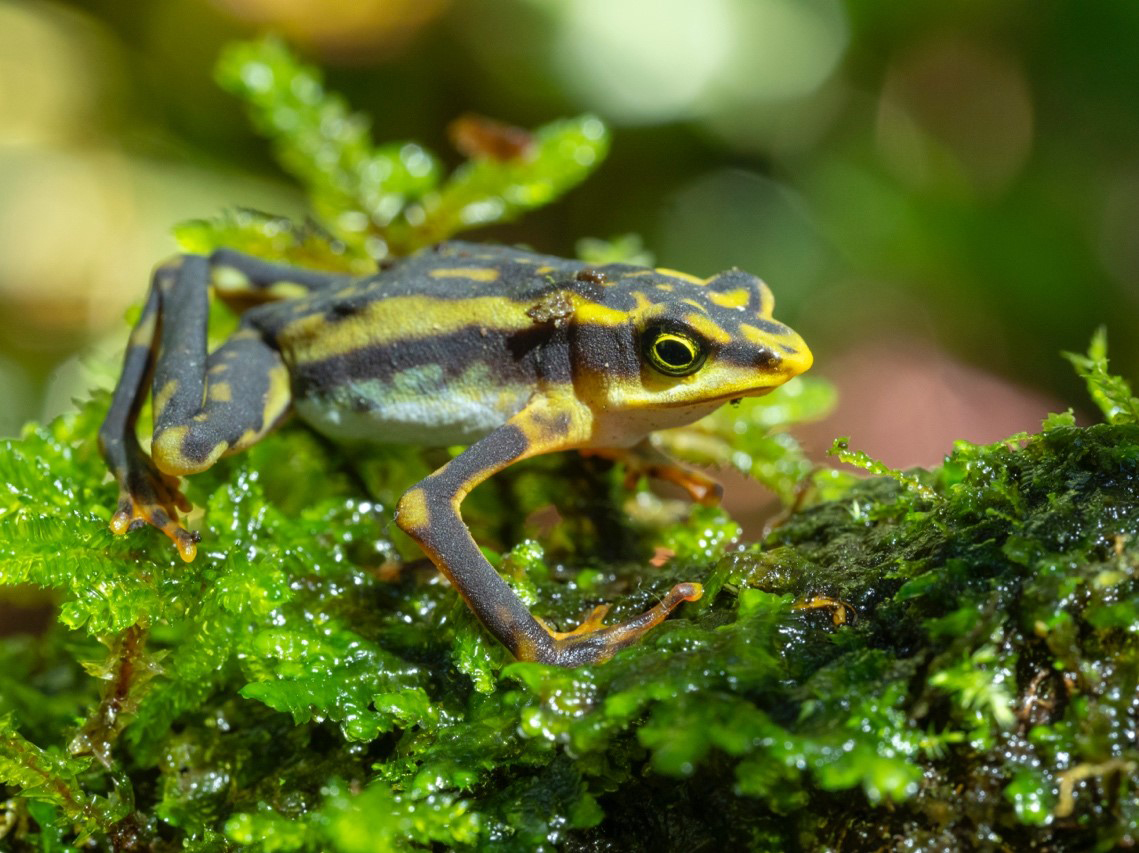Meet the frogs overcoming extinction
If there’s news about amphibians these days, odds are it’s not going to be good. A pathogenic fungus has been decimating populations around the world for about forty years and counting, pushing many species to extinction. And once a species is classified as extinct, odds are it isn’t coming back.
That’s why researchers have been stunned to see one genus — Atelopus or harlequin frogs — defying the odds. Now, new research from ecologists at Michigan State University and collaborators in Ecuador is setting the stage for an unprecedented underdog story — or, if you will, an underfrog story.
With a combination of literature review and fieldwork, the team has shown that as many as 32 harlequin frog species, once thought to be possibly extinct, are still surviving in the wild.

“I can’t tell you how special it is to hold something we never thought we’d see again,” said Kyle Jaynes, the lead author of the new study published in the journal Biological Conservation. Jaynes is an MSU doctoral student in the Department of Integrative Biology and the Ecology, Evolution and Behavior Program, or EEB.
The team’s work paints a much brighter picture for the future of these frogs and biodiversity in general. But the researchers also hope it creates a sense of urgency around conserving the rediscovered species, which are still critically endangered.
“We want people to walk away from this with a glimmer of hope that

we can still address the problems of the biodiversity crisis,” said Jaynes, who works in the lab of Sarah Fitzpatrick, an assistant professor in the College of Natural Science who is based at the W.K. Kellogg Biological Station.
“But rediscovery does not equal recovery,” Jaynes said. “This story isn’t over for these frogs, and we’re not where we want to be in terms of conservation and protection. We still have a lot to learn and a lot to do.”
Since the 1980s, a fungus called Bd — short for Batrachochytrium dendrobatidis — has been killing off members of more than 500 species of amphibians, according to a recent estimate. It’s been characterized as an apocalypse.
The charismatic harlequin frog genus has been hit exceptionally hard. Over the past four decades,

experts believed that upwards of 80% of its species were driven to extinction.
Around the turn of the 21st century, however, people started spotting species that had been missing, in some cases, for decades. Reports became more frequent as time went on, but these sightings were recorded as individual incidents.
In 2019, Jaynes won a grant from the National Geographic Society to, in part, bring those disparate reports together to provide a more complete account on the status of these frogs. Now, he, Fitzpatrick and their colleagues in Ecuador have done that.
“In total, 87 species have been missing,” Jaynes said. “To date, 32 of those once-missing species — that’s 37% — have been rediscovered over the last two decades. This is a shocking number.”
The grant also enabled the MSU researchers to travel to five different sites in Ecuador to look for rediscovered frogs across a range of habitats. When they’d find one, the team would then collect saliva samples for genetic studies (they also swabbed a frog’s skin to look at which microbes, including Bd, were living there).
“If you’ve ever done an ancestry test that uses your spit, that’s the idea,” Fitzpatrick said. “It’s like 23andMe for frogs.”
“We didn’t think these frogs existed a decade ago,” Jaynes said. “Now we have DNA samples. That information is invaluable.”
Through examining that DNA, the team found that species that had been missing and presumed extinct for longer had less genetic diversity than frogs that disappeared more recently. Low genetic diversity is an indicator that a species could be more susceptible to future stressors, from say, a new strain of Bd or climate change or habitat loss.
Information like this is required to develop strategies to conserve and protect rediscovered species, but the researchers will need to gather much more of it, Jaynes and Fitzpatrick said. Still, this study shows that information is out there and points to future avenues of inquiry.
“This study opens up a lot of other questions,” said Fitzpatrick, who is also a core faculty member of EEB.
“For example, why are these frogs persisting? What we found points to the fact that there probably isn’t a single explanation,” Fitzpatrick said. “And now that we’ve described these frogs, how do we ensure their recovery?”
Read the full story in MSU Today and coverage in Science and Science News.



